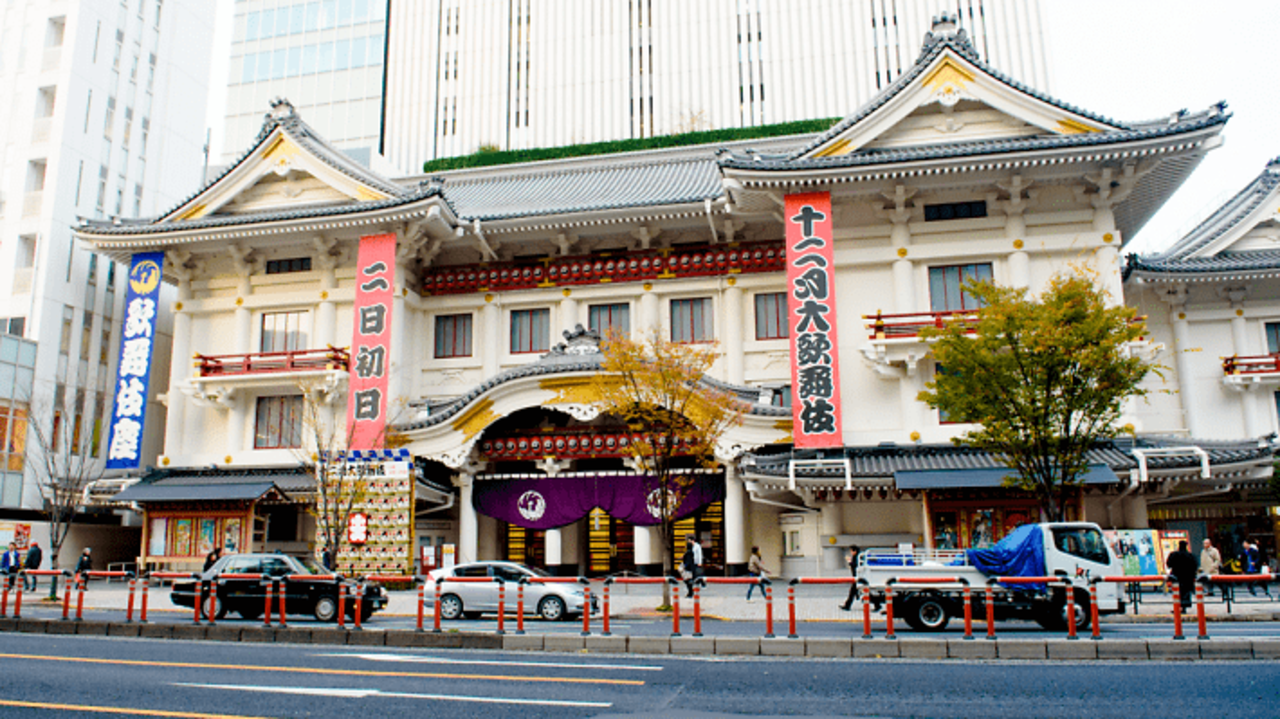
Described as having a ‘dreary past’ and being ‘inevitably on the decline’ in my previous column, kabuki is now constantly drawing sell-out crowds. How did this turnaround happen? Before answering that question, we need to look at what kabuki is exactly – otherwise, this column could be summarised in a single sentence that would read something like ‘debuts by young stars like Sannosuke and the Taka-Tama duo brought audiences back’.
Folk art? Not so fast

In 2008, kabuki was named an Intangible Cultural Heritage by Unesco – a recognition eagerly reported in the press, which was happy to fete kabuki’s World Heritage status. But what is a Unesco Intangible Cultural Heritage, really? Taking a look at the long list of performing arts so designated, we find entries such as Uganda’s ‘Bigwala, gourd trumpet music and dance of the Busoga Kingdom’ and ‘Ritual dramatic art of Ta'ziye’ from Iran.
Alright, then – looking at other Japanese representatives, we get ‘Mibu no Hana Taue, ritual of transplanting rice in Mibu, Hiroshima’, and the picture becomes clearer: the Intangible Cultural Heritage label applies to folk arts from all around the world.
Kabuki, however, does not fit in such a category. Although its origins lie in folk arts, it has kept up with the times for the past 400 years as a contemporary, urban form of entertainment. The Unesco list contains several ’classical’ forms of performing art, such as China’s Peking Opera and Japan’s Noh and Bunraku, but none of these compare to kabuki in terms of social significance and scale.
For kabuki’s inclusion to make sense, one would also need to incorporate entries like ‘Broadway musicals in New York’; as it stands, kabuki simply feels somewhat out of place in the Intangible Cultural Heritage catalogue. Note that I’m not arguing for kabuki’s superiority over ‘mere’ folk arts with this suggestion. Let me explain.
First, take scale: when giving a talk at a symposium, I once mentioned the fact that over a million people watch kabuki at a single theatre – Tokyo’s Kabukiza – on a yearly basis. My audience was surprised, to say the least, and seemingly couldn’t believe such a whopping figure. This number could even be higher than the yearly attendance at the old Hiroshima Municipal Stadium, one of Japan’s most revered baseball venues.
There are roughly 2,000 seats at the Kabukiza. Assuming all shows (twice daily) were sold out, that would amount to 4,000 people per day. Remarkably, there are performances on 25 days every month throughout the year, without breaks, so a simple calculation gives us a total of 1.2 million visitors yearly.
In fact, two or three months every year see three performances daily, bringing the potential one-day total to 6,000, so the enormous number mentioned above is actually quite reasonable.
Realistically, not all shows will be sold out, so cutting 15 to 20 percent off the maximum figure would bring us to right around one million. However, as the Kabukiza was closed for renovations between 2010 and 2013, audience numbers saw a clear upswing after the theatre’s re-opening, with sellouts continuing for quite some time. Therefore, the total most likely hit well over 1.2 million yearly during that period. Add in other kabuki theatres in both Tokyo and elsewhere, and you’ll get a multi-million annual attendance number.
The audience is king
Second, we need to consider kabuki’s social significance as an art form, particularly its ability to stay with the times. Kabuki is not merely about performing plays from bygone days. Even the classics would not attract audiences were it not for new performers and the new interpretations they bring to the table.
New works are of course also being performed. 2015 saw the unveiling of an unprecedented kabuki play based on the One Piece manga; this innovative venture was a success both in terms of content as a kabuki play and box office performance, and makes for the perfect testament to kabuki’s constant interaction with modernity.
Once, when I took a Russian ballet official to the Kabukiza, she first mistook the theatre for a museum (well, it certainly looks rather old-fashioned) and thought the classical performances on show were held to amuse visitors to this museum.
She then asked me how many kabuki plays existed in total, and when I explained that 300-400 works are performed during every 10-year cycle, with another 1,000 or so eligible for possible revival, I was greeted only with stunned silence.
This state of affairs is due to the singular fact that popularity trumps everything in kabuki – it has survived as an urban form of entertainment for 400 years, brushing off even changes as dramatic as the Meiji Restoration of 1868, precisely because it has continued to speak to the feelings of its audience.
Preservation and reproduction are two major keywords when discussing any traditional form of art. Some people may think only preservation matters when it comes to tradition, but the continued survival of a tradition actually depends on its ability to reproduce itself through innovation.
Although this process of reproduction may result in changing the tradition itself, the preservation aspect is usually emphasised to stress the tradition’s ‘unchanging’ nature, resulting in the erroneous understanding of traditions as static and perpetual.
However, rather than being exposed as a misconception, the illusion of ‘tradition unchanged for hundreds of years’ is typically repeated as an authoritative ‘truth’ and accorded value, making it socially significant. This is true for tradition in any country in the world.
Kabuki, too, depends on preservation and reproduction. Its case is made unique, however, by the subtle connection and play between the concepts of ‘preservation of the art’ and ‘reproduction of the stars’.
Star power
Kabuki today is performed by around 300 actors, whose art has been passed down in their respective families for generations. Their ‘art’, in this sense, can be thought of as a ‘performance technique’ cultivated over four centuries. Some components disappear, others change, but the line itself remains intact.
Recent years have seen graduates of the Kabuki Training programme at the National Theatre of Japan join the acting ranks, but although this system contributes to passing on certain elements to the following generation, it is the art preserved by venerable houses, such as that of Ichikawa Danjuro, that is the mainstay of kabuki.
Despite this, the unique thing about kabuki is its lack of complacent deference to authority one might see, for example, in an esteemed wagashi confectioner preparing traditional sweets with the exact recipes that have been in the family for hundreds of years.
Being born into a family of kabuki actors means taking on the task of artistic preservation, thus becoming the latest link in a chain that reaches far back into history, but it also entails performing one’s ancestral art – with one’s own body, and without fear of the occasional scandal – in front of the audiences of contemporary Edo-Tokyo. This is the ‘reproduction of the stars’ referred to above – something practised by each young actor bearing the name of a famed kabuki house.
To conclude, although old-timers and critics never stop calling for the ‘preservation of the art’, kabuki would quickly fall from grace without the popularity of its stars. Devoid of its heroes, it would be deflated like a punctured balloon – an old confectioner can sell his limited batch of 50 orders per day without working up a sweat, but sustaining a theatre with a yearly audience of a million requires a different level of effort.
So, then, it was this ‘reproduction of the stars’ that pulled kabuki out of the misery I wrote about in my previous entry and brought about the prosperity it enjoys today – but how that actually happened will have to wait until next time, when I also plan to offer some practical advice on how to actually attend a kabuki performance.
(Written by Takeo Funabiki/Time Out Tokyo)
